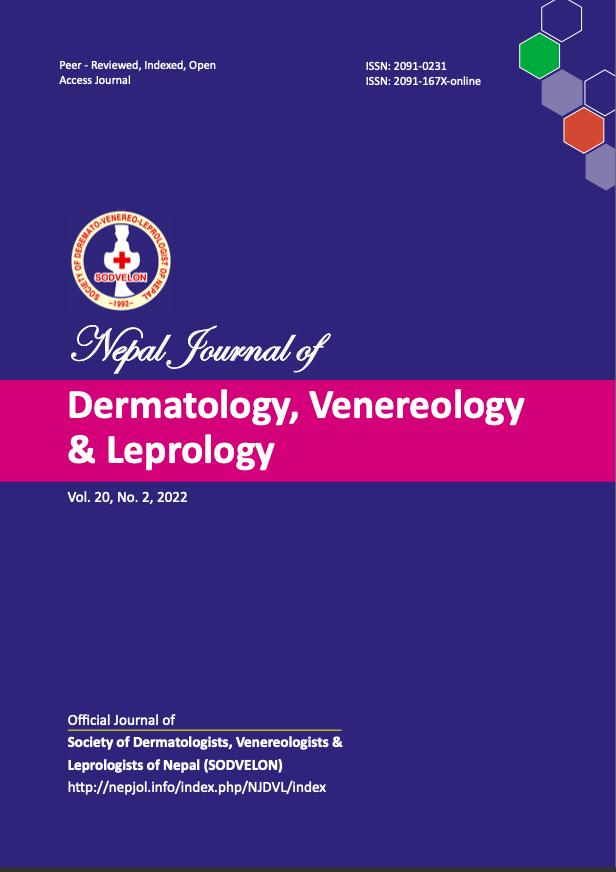Trichoscopic Study on Tinea Capitis: A Hospital Based Study
DOI:
https://doi.org/10.3126/njdvl.v20i2.45390Keywords:
Children, Tinea capitis, TrichoscopyAbstract
Introduction: Tinea capitis is a common dermatophyte infection of the scalp and hair shaft, most commonly observed in children. Trichoscopy is nonivasive tool which helps in early diagnosis and prompt treatment of tinea capitis.
Objectives: This study was carried out with the aim to describe the trichoscopic features of tinea capitis and to find out its different clinical variants with the aid of trichoscopy.
Materials and Methods: This is a hospital based cross sectional descriptive study conducted from 1st January 2019 to 31st December 2019. All patients clinically diagnosed with tinea capitis were included in the study.
Result: A total of 50 patients with tinea capitis were recruited. The most common age group was found to be 6-10 years (52%) and 27 patients (54%) were female. Majority of the population were students, i.e. 46 patients (92 %). Family history was positive in 38% of cases.
The clinical variants seen were black dots in 20 patients (40%), followed by gray patch in 15 patients (30%), kerion in 8 patients (16%) and combined type (both gray patch and black dots) in 4 patients (8%). The most common trichoscopic feature were black dots in 40 (80%), followed by comma hairs in 38 (76%), corkscrew hairs in 33 (66%), and broken hairs in 24 (48%).
Conclusion: This study highlighted that the use of trichoscopy as non-invasive tool helped in diagnosing the cases of tinea capitis without the use of wood’s lamp and laboratory investigations.
Downloads
Downloads
Published
How to Cite
Issue
Section
License
Copyright (c) 2022 Society of Dermatologists, Venereologists and Leprologists of Nepal

This work is licensed under a Creative Commons Attribution 4.0 International License.
Copyright on any research article is transferred in full to Nepal Journal of Dermatology, Venereology & Leprology upon publication. The copyright transfer includes the right to reproduce and distribute the article in any form of reproduction (printing, electronic media or any other form).




